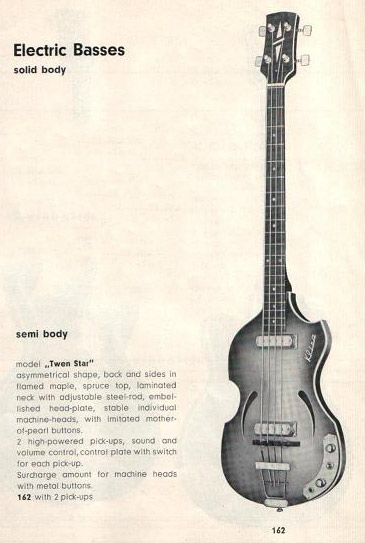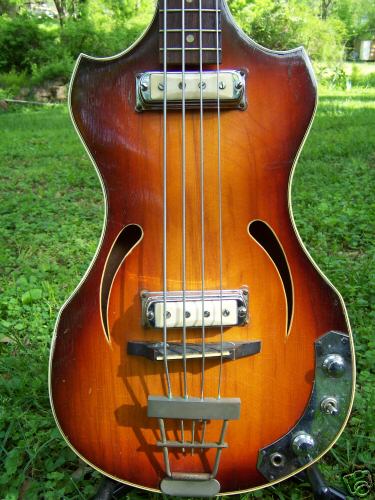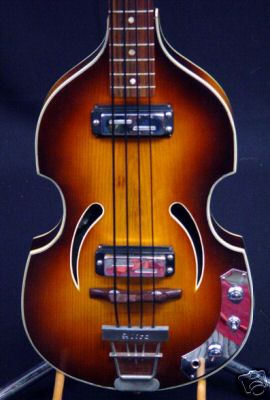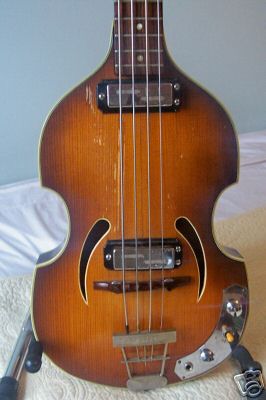Klira Twen Star basses
by Jack Marchal
This was the most famous Höfner-inspired violin bass after the Eko 990. We can conjecture that, like the latter, the Twen Star was developed in 1964 and started in 1964/1965, that it enjoyed a peaking popularity in 1966 and was as soon as 1968 hopelessly old-fashioned.
The Twen Star looks and plays about just as good as a Höfner 500/1 or an Eko 990, and sounds rather better, with a really “woodish” voice and despite the short scale (30 “) an astonishing capacity to emulate when needed the tone of a double bass.
But remember, it’s a Klira, which entails that:
- Construction is a little bit fragile and the thin lacquering is very wear sensitive
- There is a mindboggling diversity of versions.
There were basically two generations
- 1. Model 162 (1965/1966): glued-in neck, one-piece back, no pickguard, generic Schaller ivory pickups.
- 2. Model 356 (1967/1968): bolt-on neck, two-piece back, optional pickguard, specific chrome pickups.
First generation was also offered with surrealistic body shapes (162-2 and 162-3 variants). The first 356 are actually a transitional configuration
Italiano
Ecco il più famoso basso violino di ispirazione Höfner dopo l’Eko 995. Si può congetturare che, come quest’ultimo, venne disegnato nel 1964 e lanciato nel 1964-65, che conobbe la sua massima popolarità nel 1966, e che nel 1968 era già disperatamente fuori moda.
In termini estetici e di suonabilità il Twen Star combatte ad armi pari con gli Höfner 500/1 e gli Eko 995. Il suono è per certi versi migliuore, con una sua voce proprio “legnosa” e, malgrado la scala corta di 762 mm, una sorprendente capacità di emulare egregiamente un contrabbasso.
Ma ricorda, è un Klira. Il che implica:
- costruzione un poco fragile, verniciatura sottilissima e sensibile all’usura,
- varietà sterminata di versioni.
Ci sono state principalmente due generazioni:
- 1. Modello 162 (1965-66): manico incollato, retro monopezzo, niente battipenna, pickups avorio Schaller generici.
- 2. Modello 356 (1967-68): manico avvitato, retro in due pezzi, battipenna opzionale, pickups cromati specifici.
La prima generazione venne anche declinata con sagome surrealiste (tipi 162-2 e 162-3).





